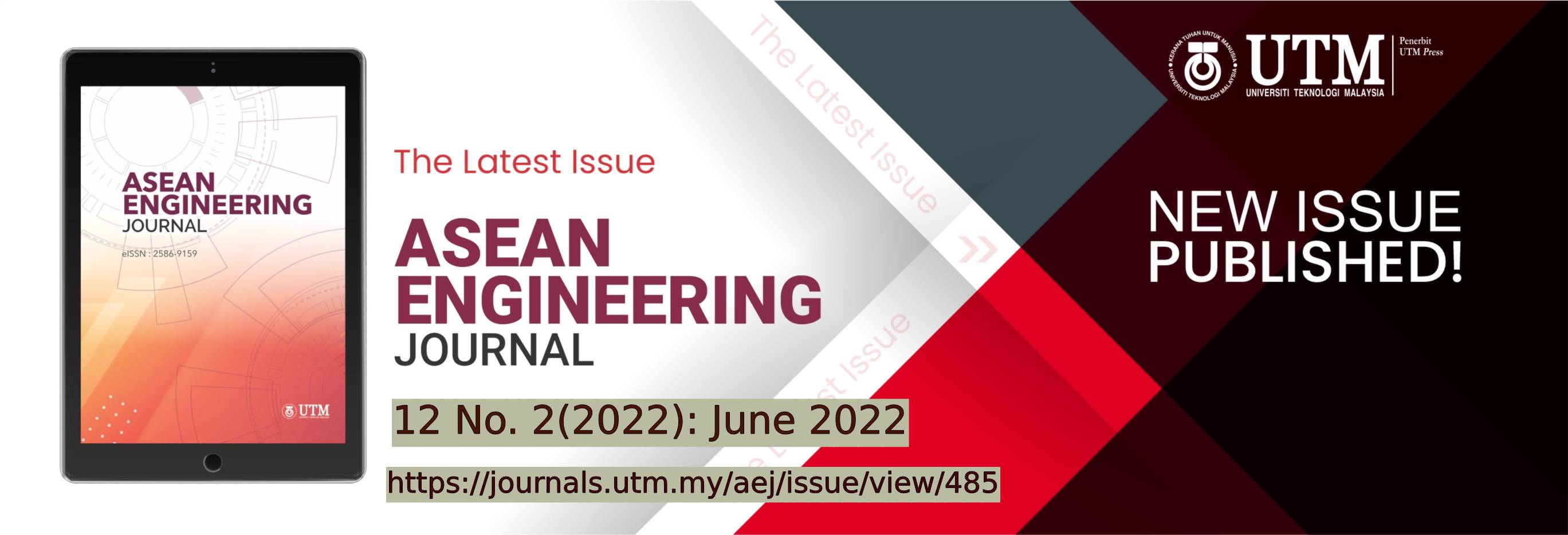RAIN DETECTING ACCURACY OF WEATHER RESEARCH FORECASTING (WRF) AND TRMM RAINFALL PRODUCT OVER CAMBODIA
DOI:
https://doi.org/10.11113/aej.v12.17504Keywords:
Cambodia, Categorical statistic, Rainfall, TRMM, WRFAbstract
Rainfall is one of the important parameters for evaluating flood hazard risk. Cambodia is a vulnerable country to extreme rainfall where the number of rain gauges over the country is limited. Therefore, the possibilities of applying rainfall products from satellite observation and rainfall forecasting models are crucial for the country. The purpose of this research is to evaluate the detecting accuracy of the rainfall-based Weather Research Forecasting (WRF) model and TRMM rainfall products by comparing with observed rainfall during heavy rainfall for different topography over Cambodia. The categorical statistic is used to calibrate the rainfall from the WRF model with observed rainfall from 23 stations over Cambodia on selected heavy rainfall dates of 15, 17, and 19 September 2019. Cambodia experienced floods along the Tonle Sap River and the Mekong Basin by the triggered heavy rainfall. The results show that the detecting accuracy of days 15, 17, and 19 from TRMM rainfall matched with observed rainfall are 55%, 71%, and 63%, respectively. The average detecting accuracy of mountainous is 65% whereas plains are 63.33%. The average detecting accuracy of coastal and Tonle Sap is 53.66% and 63%, respectively. Moreover, the detecting accuracy of days 15, 17, and 19 forecasts from the WRF model compared with observed rainfall are 41%, 69%, and 63%, respectively. The average detecting accuracy of mountainous, plains, coastal, and Tonle Sap are 52%, 55.66%, 52.33%, and 65.66%, individually. The forecast rainfall from the WRF model and TRMM could detect the rainfall. They are therefore should be used in the areas that lack rainfall stations in Cambodia.
References
Bhart, V., & Singh, C. 2015. Evaluation of error in TRMM 3B42V7 precipitation estimates over the Himalayan region. Journal of Geophysical Research: Atmospheres, 120(24):12458-12473. DOI: https://doi.org/10.1002/2015JD023779
Koem, C., & Tantanee, S. 2020. Flash flood hazard mapping based on AHP with GIS and satellite information in Kampong Speu Province, Cambodia. International Journal of Disaster Resilience in the Built Environment, 12(5): 457-470. DOI: https://doi.org/10.1108/IJDRBE-09-2020-0099
Palchaudhuri, M., & Biswas, S. 2016. Application of AHP with GIS in drought risk assessment for Puruliya district, India. Natural Hazards, 84(3): 1905-1920. DOI: https://doi.org/10.1007/s11069-016-2526-3
Chhinh, N., & Millington, A. (2015). Drought Monitoring for Rice Production in Cambodia. Climate, 3(4), 792-811.
Koem, C., & Tantanee, S. (2021). Flood Disaster Studies: A Review Of Remote Sensing Perspective In Cambodia. Geographic Technica, 16(1): 13-24. DOI: https://doi.org/10.21163/GT_2021.161.02
Srinivas, C. V., Yesubabu, V., Hari Prasad, D., Hari Prasad, K. B. R. R., Greeshma, M. M., Baskaran, R., & Venkatraman, B. 2018. Simulation of an extreme heavy rainfall event over Chennai, India using WRF: Sensitivity to grid resolution and boundary layer physics. Atmospheric Research, 210: 66-82. DOI: https://doi.org/10.1016/j.atmosres.2018.04.014
Navale, A., & Singh, C. 2020. Topographic sensitivity of WRF-simulated rainfall patterns over the North West Himalayan region. Atmospheric Research, 242, 105003. DOI: https://doi.org/10.1016/j.atmosres.2020.105003
Sorooshian, S., Hsu, K., Gao, X., Li, J., AghaKouchak, A., & Nasrollahi, N. 2012. Assessing the Impacts of Different WRF Precipitation Physics in Hurricane Simulations. Weather and Forecasting, 27(4): 1003-1016.DOI: https://doi.org/10.1175/WAF-D-10-05000.1
El Afandi, G., Morsy, M., & El Hussieny, F. 2013. Heavy Rainfall Simulation over Sinai Peninsula Using the Weather Research and Forecasting Model. International Journal of Atmospheric Sciences, 2013: 1-11. DOI: https://doi.org/10.1155/2013/241050
Kaewmesri, P., Humphries, U., Wangwongchai, A., Wongwies, P., Archevarapuprok, B., & Sooktawee, S. 2017. The Simulation of Heavy Rainfall Events over Thailand Using Microphysics Schemes in Weather Research and Forecasting (WRF) Model. World Applied Sciences, 35(2): 310-315. DOI: 10.5829/idosi.wasj.2017.310.315
Kaewmesri, & et al. 2017. Simulation on high-resolution WRF model for an extreme rainfall event over the southern part of Thailand. International Journal of Advanced And Applied Sciences, 4(9): 26-34. DOI: https://doi.org/10.21833/ijaas.2017.09.004
Navale, A., Singh, C., Budakoti, S., & Singh, S. K. 2020. Evaluation of season long rainfall simulated by WRF over the NWH region: KF vs. MSKF. Atmospheric Research, 232: 104682. DOI: https://doi.org/10.1016/j.atmosres.2019.104682
Hodges, K. I., Klingaman, N. P., & Peatman, S. C. 2019. Tropical Cyclone–Related Precipitation over the Northwest Tropical Pacific in Met Office Global Operational Forecasts. Weather and Forecasting, 34(4): 923-941. DOI: https://doi.org/10.1175/WAF-D-19-0017.1
Yik, D. J., Williams, K. D., Tangang, F., Permana, D., Marzin, C., Handayani, A. S., Xavier, P. 2020. Seasonal Dependence of Cold Surges and their Interaction with the Madden–Julian Oscillation over Southeast Asia. Journal of Climate, 33(6): 2467-2482. DOI: https://doi.org/10.1175/JCLI-D-19-0048.1
CFE-DM. 2017. Cambodia Disaster Management Handbook. Phnom Penh, Cambodia: Center for Excellence in Disaster Management & Humanitarian Assistance.
Yi, L., Zhang, W., & Wang, K. 2018. Evaluation of Heavy Precipitation Simulated by the WRF Model Using 4D-Var Data Assimilation with TRMM 3B42 and GPM IMERG over the Huaihe River Basin, China. Remote Sensing, 10(4): 646. DOI: https://doi.org/10.3390/rs10040646
Tian, Y., Peters-Lidard, C. D., Eylander, J. B., Joyce, R. J., Huffman, G. J., Adler, R. F., Zeng, J. 2009. Component analysis of errors in satellite-based precipitation estimates. Journal of Geophysical Research, 114(D24). DOI: https://doi.org/10.1029/2009JD011949
Su, F., Hong, Y., & Lettenmaier, D. P. 2008. Evaluation of TRMM Multisatellite Precipitation Analysis (TMPA) and Its Utility in Hydrologic Prediction in the La Plata Basin. Journal of Hydrometeorology, 9(4): 622-640. DOI: https://doi.org/10.1175/2007JHM944.1
















